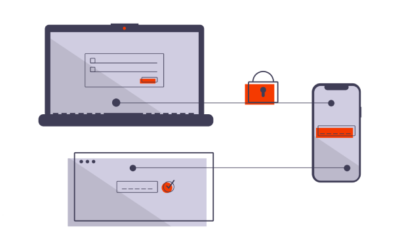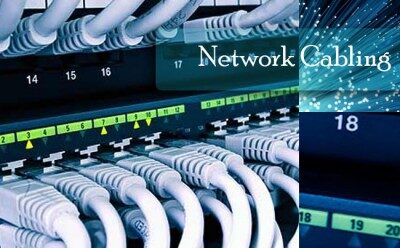Access Control and Surveillance as IP Infrastructure
Access Control and Surveillance as IP Infrastructure
Devices and Applications in the corporate environment have become increasingly IP-based. The IP which used to be always there on the backend, at the integration level, is finding a place in front end user application as well. The simplicity and familiarity to configure are the two main reasons which drive the IP adoption.
The recent two new applications, which were traditionally non-IP or non-IT, are access control and surveillance, to be added to IP Infrastructure. Both these applications are beside whatever have already transformed like voice communication (SIP Now), Storages, Wireless access etc. Access control and Surveillance, both these devices used IPs; only in the head-end side where the storage media or controllers are connected to the network infrastructure. Today CCTV cameras and the access controller up to the sensor level, are IP enabled and ready for deployment as part of the IT infrastructure.
These changes have been gradually happening for the last 10 years. Because of the ubiquitous nature of IP in the infrastructure, it is logical for any manufacturer to adopt IP for their applications to be part of the infrastructure. All the Low voltage applications, including the Industrial Automation, will morph or change to IP Infrastructure

What is Cybersecurity Audit, and what are the benefits?
One of the most important steps that businesses can take to protect themselves from cyber threats is to conduct regular cybersecurity audit. Cybersecurity audits are a systematic assessment of an organization's information security posture. They identify...
The Essential Guide to IT Infrastructure Procurement
Tips for Streamlining your IT Purchasing Process IT infrastructure procurement is a critical and complex process for business of any size. Streamlining this process is necessary to ensure efficiency, cost efficiency and right implementation of the...
An Introduction to APM (Application Performance Monitoring)
APM (Application Performance Monitoring) tools are software applications that help monitor and manage software applications' performance. They provide insights into various aspects of an application's performance, including response time, resource utilization, and...
7 ways to make good use of Firewall for SME
Any Investment in the IT Infrastructure has to be in the best interest of the Business and Productivity. Good use of firewall for small and medium enterprises can save you from a catastrophic cyber attack in the future. Here is a list of important...
Remote Work Challenges
Companies are adapting to the concept of remote working/ WFH (Work From Home). This is becoming increasingly popular, as Time and Productivity are crucial in this fast-paced world. WFH or remote working saves travel time, company resources, costs, and enhances...
Upgrade from Windows 7 to Windows 10
Windows 7 which belongs to the Windows NT family of Operating systems and released on July 22, 2009 was a major success for Microsoft with the new and unique taskbar being the biggest visual change, compared to that of its predecessor (Windows Vista).
What One Should Know About Firewall Renewal?
Firewall A Firewall is a system /a network security device which can be an appliance (Custom Hardware/ Software Combo) or a Software Application residing on a Commercial Server Hardware. Irrespective of the type, they are critical in a Network as it is in the path of...
Case Study On EndPoint Security And DLP For NBFC (Microfinance Company), India
The client, is a Microfinance institution committed to working towards women’s economic empowerment. It is providing innovative and affordable financial products to women from unbanked sections in society in both rural and semi urban areas. It has branches in 16...
Enterprise Service Desk
According to the Information Technology Infrastructure Library (ITIL), an enterprise service desk comes as the primary IT function within the IT Service management. The main motive or intent for creating such an IT function is to create a Single Point of Contact...
Network Diagnostic Using TDR Commands
A Time Domain Reflectometry (TDR) is an electrical instrument that uses time-domain reflectometry to characterize and locate faults in metallic cable (for example, twisted pair wire or coaxial cable). It can also be used to locate discontinuities in a...










